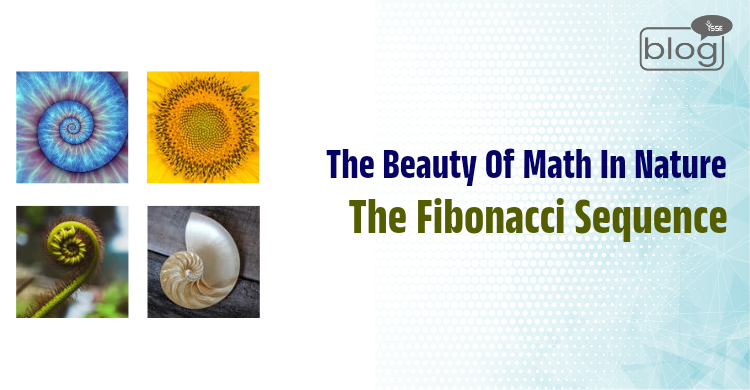Do you know some flowers and plants maintain an algorithm? Are you eager to know how we will find mathematics in nature?
Well, these questions lead to the sequence named Fibonacci. It is a sequence that starts with 0 and 1, and where every number can be found except the first two by the sum of the previous two numbers. For Example: 0, 1, 1, 2, 3, 5, 8, 13… is a Fibonacci Sequence.
The sequence was first found in Indian mathematics around 450 BC, where the sequence is connected with Sanskrit prosody. In that time, the poets used this sequence in their poems. Later, the Fibonacci Sequence got its name from Édouard Lucas in the 19th century. We can also find this sequence in beautiful nature. And it reveals itself in infinite form. Let’s see in which part of nature we can find this amazing sequence of math:
Flowers:
Flowers like lilies, irises, wild roses, and delphiniums follow the Fibonacci sequence. If you see the flower deeply, you can see it follow a spiral sequence. Many flowers follow the petal count, which is related to Fibonacci.
Leaves:
Leaves also follow the Fibonacci sequence. A leaf always grows tiny to large. And during its growth, it follows the 0, 1, 1, 2, 3, 5, 8,… sequence.
The shell of Snails:
The snail shell is spiral in nature. So it can be said that the Fibonacci sequence is also found in the shells of snails.
Hurricane:
A disaster like a hurricane follows a mathematical sequence. The spiral figure of the hurricane leads to a Fibonacci sequence. The eye of a hurricane is related to the 0,1 sequence.
Galaxies:
From Earth, now let’s journey towards distant galaxies. If we dive into galaxies, we will see that most of the galaxies are spiral in nature. Our galaxy, the Milky Way, also spirals. So, our galaxy and most of the galaxies are made by following the wonder called The Fibonacci Sequence.
The connection of the Fibonacci Sequence & Golden Ratio:
The golden ratio is deeply connected with the Fibonacci sequence. It is an irrational number whose value is 1.618. The concept of the golden ratio comes from the Fibonacci sequence. Because we can find a closer value of the golden ratio by dividing two successive Fibonacci numbers. In nature, we can see this golden ratio in many things. The spiral pattern of sunflowers and seashells shows the proportion of the golden ratio. The golden ratio also appears in science. The ratio of the width of double helix DNA is equal to the golden ratio. And the widths are Fibonacci numbers. For constructing spirals with squares, we need Fibonacci numbers. These numbers are from a logarithmic spiral that is called the Golden Spiral. In these golden spirals, the ratio of Fibonacci numbers is equal to the golden ratio.
So, it can be said, that the golden ratio is a part of the Fibonacci sequence. And the beautiful nature reveals itself by the beauty of math called ‘The Fibonacci Sequence.’ From seashells to galaxies, math shows its presence in nature and shows its beauty. And why nature shows amazing patterns is still unknown and mysterious! So, it will be an amazing discovery for mankind if they find the exact reason for this natural beauty of math in flowers, leaves, and distant galaxies.
To read more blogs like this, click here
Writer,
Prottoy Kanti Das,
Intern
Content Writing Department,
YSSE.

